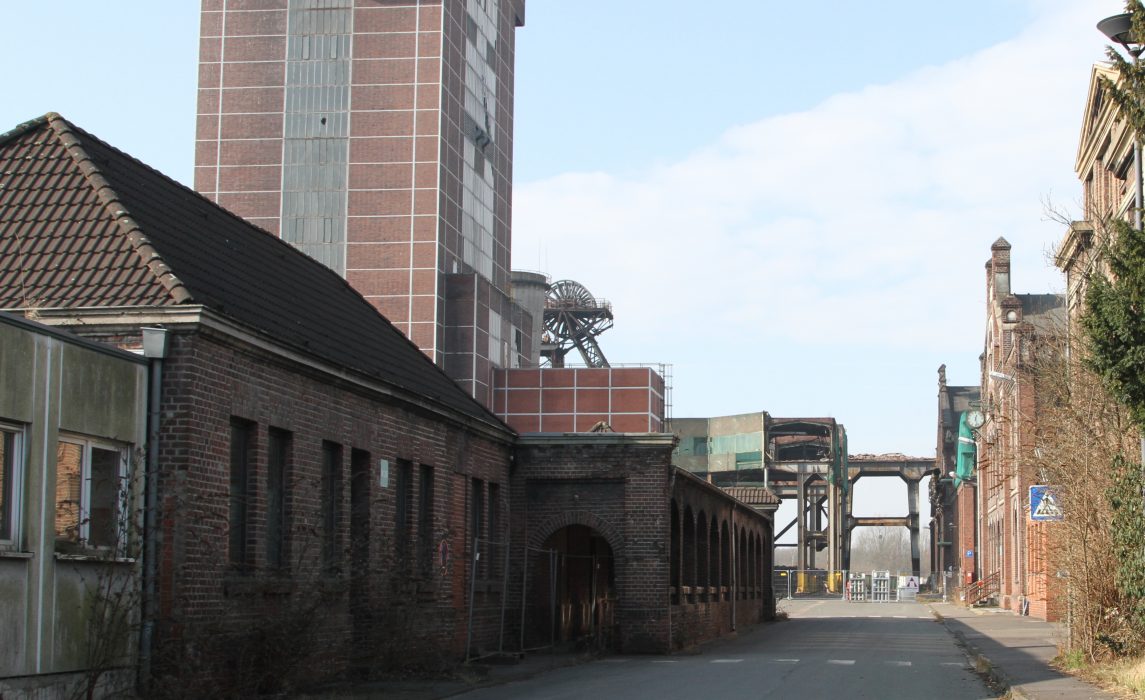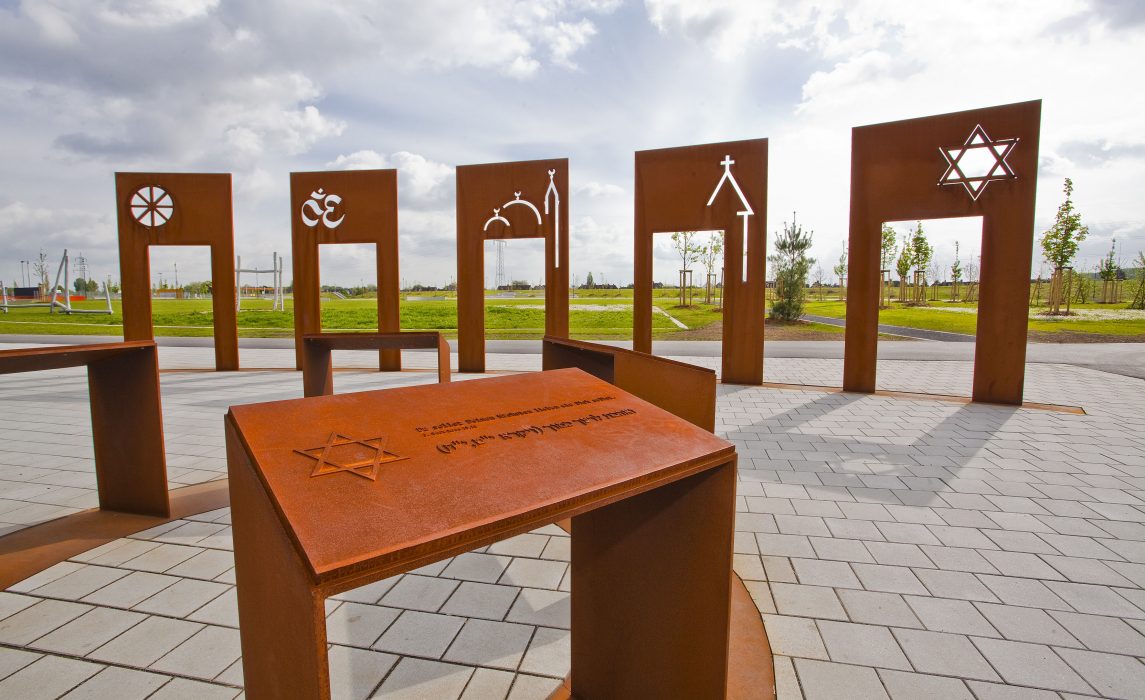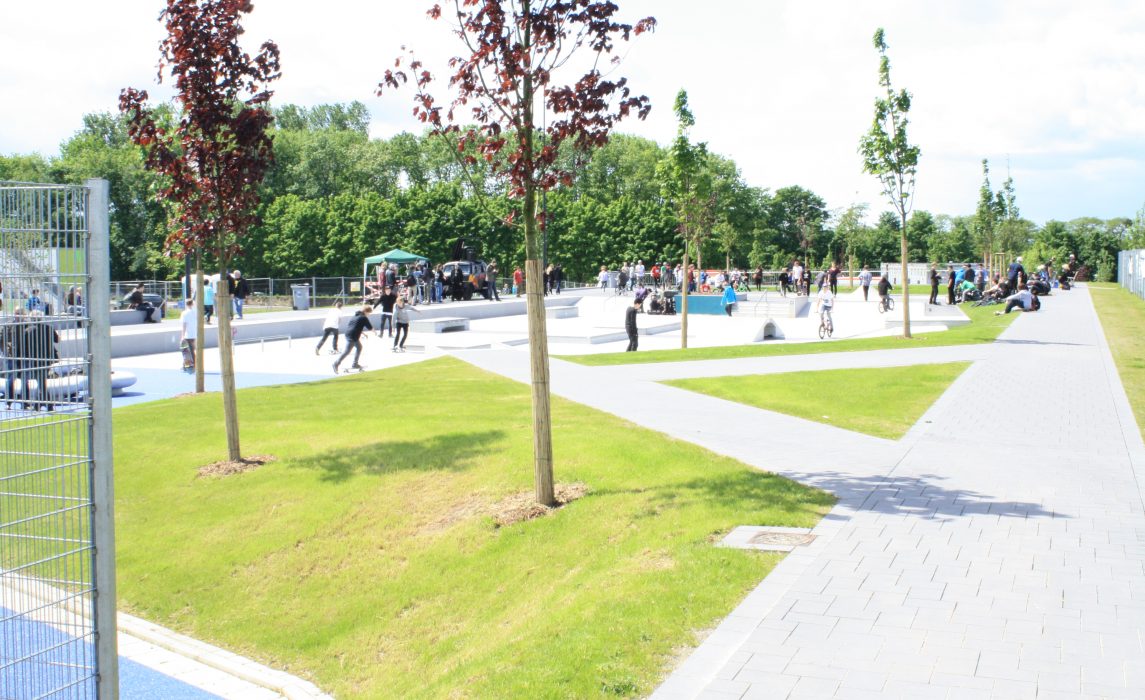Your download is ready. Click here to download.
The deindustrialization of Germany’s coal region has left both physical and social scars on communities like Hamm, a medium-sized city that found itself reckoning with abandoned coal-mining facilities and a multicultural population struggling with economic decline. When the town’s last mine closed in 2010, the mayor pushed for the abandoned industrial site to become an asset for the town in the form of a park. Learning from a previous failed public works initiative that did not actively engage the citizenry, the mayor created a citizens advisory committee drawn from a diverse population to shape Lippepark, which has become a centerpiece of Hamm’s postindustrial civic identity.
The Challenge
The Ruhr region in western Germany was once the coal-fired engine of Europe’s biggest industrial power. But global economic changes in the coal and steel industries that began in the late 1950s and a decision by the state of North Rhine-Westphalia to phase out coal mining for environmental reasons has led to a half-century period of transition. Hamm, a city of 185,000, is one of several small to medium-sized cities in the state grappling with that transition.
The de Wendel mining firm developed Hamm as a company town in the early 1900s, drawing migrants from all over Europe to dig for coal buried over 1,000 meters deep. Five mines opened in quick succession, some closing within just a few years but others lasting a century. At its peak in the 1970s, the city’s population was 195,000. As a company town, Hamm was close-knit, and nearly every family had at least one member working in the mine. The company built modest but comfortable single-family housing for workers and social and leisure outlets, such as a sports club.
With secure work guaranteed for any able-bodied man, Hamm produced several generations of mine workers. “Civic life centered around the mine,” explains city planner Katja Meusel, whose great-grandparents were immigrants from Poland who came to Germany to work in mines. “The mine was not only a working place, it was the whole culture.”
As Germany began to shift away from coal, Hamm received almost three decades notice that its final mine would close in 2010. Nevertheless, coal culture was so pervasive that the warnings were not taken seriously. “People did not want to believe that there would be an end; we would not imagine a life without coal mining,” Meusel said of the attitudes at the time. “There was still hope for a miracle that everything would go on like it was.”
When de Wendel gave a ten-year notice in 2000, Meusel said, “all hope was destroyed.” Veteran miners took an early pension, some younger workers received training for other jobs, and others moved to cities that still had mining jobs, though those are now gone. The last black-coal mine in North Rhine-Westphalia closed in late 2018, in Bottrop, 75 kilometers from Hamm.
The mine closure was a blow to Hamm’s civic identity and economic vitality. The lost jobs created social problems. The multicultural community began to fray along ethnic and religious lines. The previously functioning community threatened to disintegrate, and ethnic groups retreated. The city created social programs for women, children, and teens in an effort to stem some of the discord.
Hamm’s struggles were symbolized by the 220 hectares (540 acres) of abandoned mines spread across parts of three mines along a 5 kilometer stretch. Fenced off and boarded up, these hulking industrial remnants were a bitter reminder of better times.
The Solution: Lippepark
In 2004, as the final mine closure neared, a local political party was already agitating for more greenery and culture in Hamm. That desire led the mayor at the time to champion an effort to turn a river that runs through the city into a lake that could serve as a park. The effort, called Lippelake, failed in part because of a lack of citizen engagement.
“We involved in our planning process a lot of groups — many of the groups who felt positively about Lippelake, not enough those who were skeptical,” explained Heinz-Martin Muhle, head of the city planning department for Hamm. There was an election to approve the project,which they expected to win with 60 percent of the vote. Instead, 60 percent of voters opposed the project.
This was a lesson that Mayor Thomas Hunsteger-Petermann heeded when the mines closed.
In 2009, on the eve of the closure, Mayor Hunsteger-Petermann, inspired by peer cities along the Ruhr Industrial Heritage Trail that have transformed industrial sites into parks and cultural hubs, proposed a similar transformation in Hamm. He hired a landscape design and planning firm that confirmed the site was suitable for a park with sports, recreation, and culture options. But rather than proceed top-down from city hall to implement a specific site plan, he convened a citizen advisory committee to shape what the park looked like — a committee that could both react to ideas presented by professional designers and come up with their own proposals.
“We have processes that are standardized by law to involve citizens in Germany,” explained Muhle. These requirements include a civil hearing and publishing a draft of the plan for review. Muhle said he feels these methods typically reach less than five percent of those people affected by new projects.
“We did more. To do more is important to bring democracy to the people, to give citizens an active role in urban society. That was an important part of the process for Lippepark — doing something together and over a long period of time.”
To inaugurate this process of public input to determine the future of the mine site, Mayor Hunsteger-Petermann organized a ceremony to tear down the wall surrounding the abandoned mine shaft. A local band played a traditional mining song, “Glück auf, der Steiger kommt,” and many of the 1,000 people in attendance cried. Meusel describes the message that winter night as “There is a future; mining has ended but we have a future.”
With the wall torn down, the city created a pathway through the site. Families living nearby could more easily get to the school located on the other side of the former mines. Students who attended a school located across the mining site no longer had to walk around the large area. On weekends and in the summer, curious residents came to explore the site before it was developed into a park.
“I personally took part in each of the participation offers and events,” Mayor Hunsteger- Petermann said in a letter, “and was deeply impressed by the work of the citizen council and everybody, young or old, who shared this unique process.”
Lippepark, as the public space eventually came to be known, includes sporting grounds, a skate park, a bike trail, a religious tolerance memorial, and outdoor areas to gather and grill meals. Many of the ideas for the park emerged from the citizens advisory committee.
“It was an experiment, a new form of grassroots democracy,” said Deputy Mayor Rita Schulze Böing. “We invested a lot of money, time, and manpower, but it was very exciting to see all the wonderful ideas coming into the process, all the personal know-how from the citizens as an input to the planning process — and leading the Lippepark into a really citizen-oriented landscape park.”
Nuts and Bolts: How It Works
The citizens advisory committee consisted of 30 people who met 22 times from 2009 to 2012. The cooperation of staff members drawn from different departments like parks, youth, sports, and culture in all phases of the project is one factors that led to the successful planning and building of Lippepark.
City hall allocated a 100,000 euro (US$113,000) budget over the three years to specifically fund the committee’s activities. The total budget for the project was 17 million euros (US$19.2 million). Twenty percent of this was funded by Hamm, and the remainder was paid for by funds from the regional and federal governments and the European Union.
The committee worked hard to cultivate diverse points of view, both within the committee and from residents they reached out to in their communities. There were a handful of former miners on the committee, as well as immigrants representing Hamm’s different communities. The city provided translators as needed for members who did not speak German well. The residents that came to outreach events tended to be men, in part because the former miners were predominantly men, so city staff made a special effort to recruit women. They also coordinated events to reach women in immigrant communities, such as a breakfast meetings with Muslim women at local community organizations where the women were already gathering.
The city collected proposals through formal and informal means: Residents sent emails and called city staff, spoke with members of the council, and wrote letters to the local press with their ideas. The city also held a competition through the local paper to gather proposals for the park. More than 100 ideas were submitted in total and more than 30 of those were included in the park.
These ideas were categorized into groups such as cultural, interreligious, children and young people, and sports. The citizen council and city staff discussed the feasibility of each idea. Then each member of the citizen council was given 10 stickers to vote for their favorite ideas, which were posted on the wall. Those with the most votes moved forward.
One result of the city’s efforts to engage immigrant communities was the inclusion of barbecue pits in the park. Grilling outdoors in public spaces is not a typical activity among native Germans, but immigrant groups requested them. Now the barbecue areas are in high demand.
The advisory committee engaged the city’s youth in particular, who planned the Funpark, the section with the skatepark, parkour zone, and soccer pitch. Students created a model of the park and were given information about the park to pass along to family members.
One engagement strategy involved a weekend youth group that camped overnight in the former mine area. Although Muslim youth could not stay overnight for religious reasons, they still attended every day to participate in the visioning exercise. During the camp, each student had 10 points they could award to their favorite ideas from a list of potential projects.
Another group of students worked with the artist Helmut Berger once a week over the course of a year to create seven art stations in the park. The students used tools and materials, such as welders and stone and steel from the mine to create the artwork. In the process they were exposed to the history of the town and the way of life of many of their own family members who worked in the mine.
“They learned the hard work of their fathers. They shared the success of the process and artwork and they are very proud of their own work,” said Muhle. “It was wonderful to see that the whole school adopted this work. This was a new experience to see children take responsibility for the public space.”
Religious groups were essential in consulting with the artist behind the park’s place of interreligious encounter, a monument to the world’s major religions.
The original idea for the space was submitted by three religious communities that had already been meeting regularly: members of a Protestant church, a Catholic church, and a mosque.
The city brought in additional faith groups, including members of the Jewish, Buddhist, and Hindu communities, and an artist who lived in the area, Michael Düchting, who helped them discuss and refine the idea. For example, some wanted to put water at the center of the space and others wanted a light at the center. After discussion they decided on an open, welcoming space at the center. The public art now serves as a place of rest and reflection.
In addition to the committee, the city held several other types of more traditional civic engagement. The mayor hosted regular Sunday meet and greets over coffee, and city staff set up information booths at large public events to gather feedback
Meusel herself was also an essential ingredient as she built trust over time and proved that city government is a reliable actor, which in turn grew the confidence of the citizen advisory committee.
“They built faith that they can decide with the city,” Meusel said. “It was empowerment for the people.”
Opening in 2012, Lippepark is now in almost constant use, not only by community members but residents of nearby cities who come to use the parkour court or just enjoy the park. Lippepark is free to the public. Residents sometimes compare favorably it to a more famous park across town, before considered the nicest in the city that requires paid entry.
More than 3,000 people attended an opening ceremony. A band once again played the traditional mining song, “Glück auf, der Steiger kommt,” but despite heavy rain this time, city staff describe it as a joyous event.
“All the people were laughing, nobody was crying,” wrote Schulze Böing in the Engaged Cities Award application. “A happy occasion!”
Keys to Success
The process of creating Lippepark helped the city and its people forge new networks between residents of neighborhoods from three districts bordering the area, many of whom were part of designing the park. “This led first to a new communication between people that never directly talked to each other before — and led later to a better understanding and team spirit,” Schulze Böing said. “A lot of this spirit you can still feel in that part of the city.”
Vandalism, including graffiti and litter, is low in the park compared to other public spaces in Hamm, in part because community members and youth who helped design the park also help care for it. Property values near the park have increased by an estimated 20 to 30 percent, according to city staff.
The city is already eyeing what it can do with a nearby site, part of the Heinrich Robert mine, following its experience developing Lippepark. The network that grew out of the committee process has created a proposal for housing, office space, and an event or cultural center on the site, and there is an investor interested in financing the project.
“We continue in our new planning process with the Heinrich Robert mine,” said Muhle. “We have reached a whole new level in the city from learning from the process in Lippepark because of our success there.” Even more residents are involved in the designing and planning this time.
This success and momentum stems from Hamm’s long-term commitment to the engagement process. “When you start such a participation process, you have to be sure you have the people, money, and time to bring it to conclusion,” Meusel said. “It can take a long time when you have such a big plan. After two years you cannot say the money is gone, we have to stop.”
“Think before you start — and then, when you start, do it with all your power and emotion and it will bring the process to a really good ending,” Schulze Böing said.
The city’s targeted efforts to reach out to youth, immigrants, women, and other communities also demonstrated a commitment to engaging and empowering residents — both the most vocal members of the community and those who might not otherwise be heard.
That empowerment resulted in a civic project to restore the city’s sense of self-worth. “This park makes the people proud again,” Meusel said.



